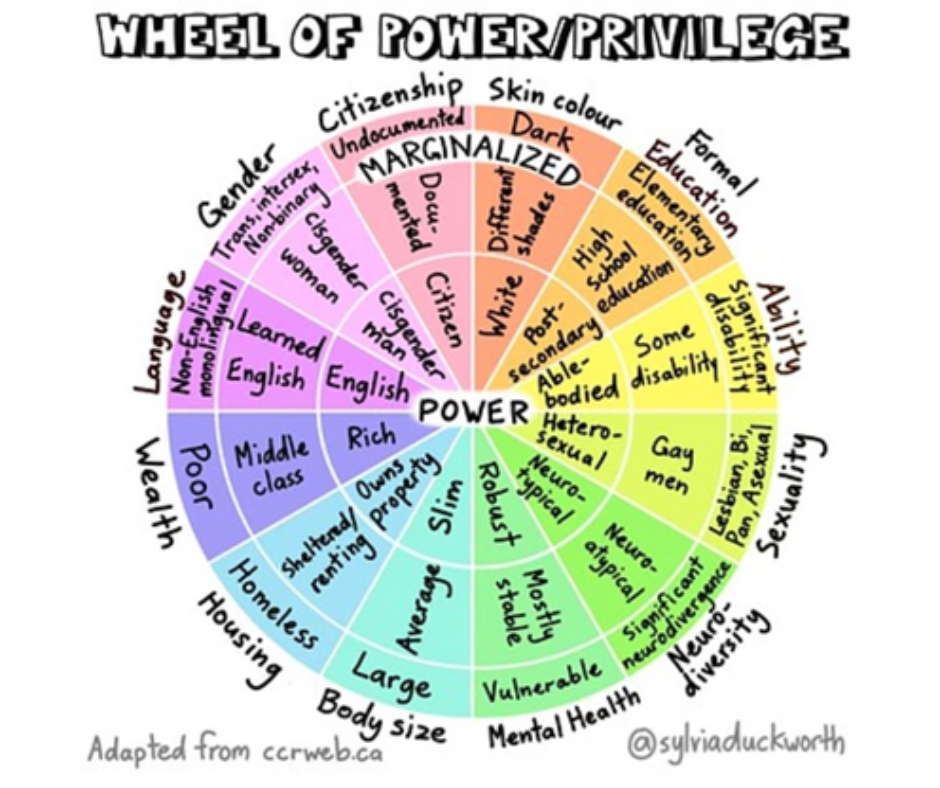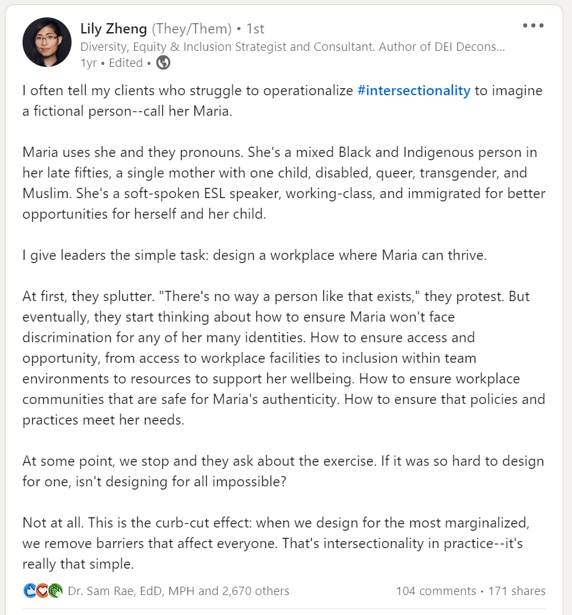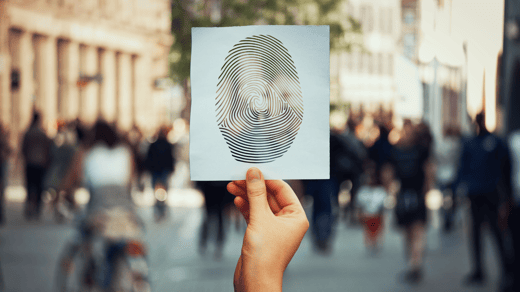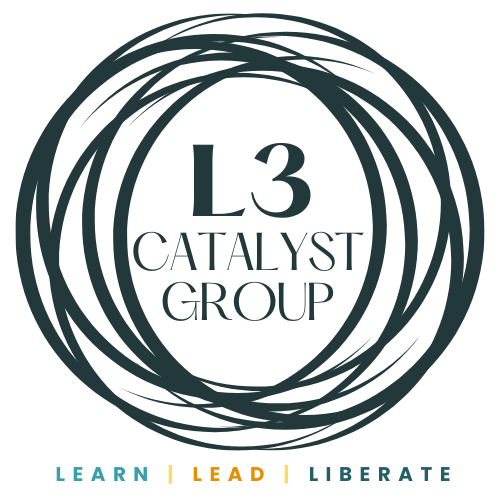Why is “identity politics” only applied to some of us when we all have identities? What are the identity politics of those in power?
Definitions matter.
Words can often be misunderstood, manipulated, watered down, and misused.
Intersectionality is often misunderstood and misused. I learned about the intersectional framework many years ago, without much depth. More recently I've applied the framework with more intentionality; it complexified and changed my views of leadership and power. And I’m still learning.
misused. I learned about the intersectional framework many years ago, without much depth. More recently I've applied the framework with more intentionality; it complexified and changed my views of leadership and power. And I’m still learning.
Understanding intersectionality is crucial to leadership.
Typically people define intersectionality as the presence of multiple identities: faith, race, sexual orientation, gender identity, language(s) spoken, etc.
Intersectionality is not simply the presence of our personal identities. It refers to the reality that the marginalized identities are compounding.
Oxford Dictionary defines intersectionality as “the interconnected nature of social categorizations such as race, class, and gender, regarded as creating overlapping and interdependent systems of discrimination or disadvantage.”
For a more detailed definition, please visit Tema Okun’s website defining White Supremacy Culture.
Key tenets of intersectionality include the following: (Source: GVSU’s Inclusion and Equity Institute)
- Human lives cannot be explained by taking into account single categories.
- Relationships and power dynamics between social locations and processes (e.g., racism, classism, heterosexism, ableism, ageism, sexism) are linked.
- People can experience privilege and oppression simultaneously. This depends on what situation or specific context they are in.
- Multi-level analyses that link individual experiences to broader structures and systems are crucial for revealing how power relations are shaped and experienced.
- When taking an intersectional approach, we must consider our social position, role, and power.
- Intersectionality is explicitly oriented towards transformation, building coalitions among different groups, and working towards social justice.
For leaders with power and privilege understanding intersectional framework is crucial to working for equity.
Understanding power is key.
There is no such thing as a single-issue struggle
because we do not lead single-issue lives.
-Audre Lorde.
Power compounds, as the power wheel illustrates. Everyone has identity components somewhere in each of these slices. Where do you see your identities? Are your identities toward the center, bringing power, or toward the outside, bringing marginalization? (More about power here.)

Marginalized identities compound as well. For example, a Black, queer, Muslim, woman experiences compounded marginalization with each identity. Comparatively, a high-income, Catholic, Latinx, male experiences marginalization and power differently. This video by Dr. Kimberle Crenshaw illustrates this.
As with intercultural development, one move toward progressing interculturally is understanding our own culture, identities, and history that brought us to today.
Are you paying attention to how power and identities play out in you? In your relationships? In your organization?
Are you in a position to change policies and practices, formal and informal, to make them more inclusive?
How are you learning, applying, and accepting accountability along your journey?
Intersectionality is a framework that always applies, whether or not we have consciousness of it. We cause harm when we aren’t intentional or don't think it applies. Here are a few examples of such harm:
- Leaders claim equity orientation but won’t allow gatherings specifically for/by LGBTQ+ constituents
- Board members question the need for all-gender bathrooms
- Faith communities call LGBTQ+ people to ministry, but Black clergy are rarely asked to lead with positional power
- Front desk staff of organizations in geographies with high percentages of Spanish speakers don’t speak Spanish
- Nonprofits work to serve people with income, language, race, and LGBTQ+ marginalization but don’t pay staff with those same marginalized identities a living wage
Lily Zheng (they/them) is a leader I constantly learn from in this space. They recently posted this:
As the curb cut effect of Universal Design purports that “when you design for disabilities, you make things better for everyone in the process,” Zheng challenges us to design our organizational systems in ways that “remove barriers for everyone. That’s intersectionality in practice -- it’s really that simple.”
What’s keeping you from making it this simple? Is this something you are elevating and prioritizing in your DEI plan?
What are your wonderings or additions? How do you see intersectionality at play in your work environment, its policies, or practices? I’d love to hear your thoughts in the comments below.
Fellow leaders and learners, I wish you courage and resilience for the journey.

 What I’m Reading
What I’m Reading
Watching/Listening to:
- YW Boston Blog - What is intersectionality, and what does it have to do with me?
- Demarginalizing the Intersection of Race and Sex: A Black Feminist Critique of Antidiscrimination Doctrine, Feminist Theory, and Antiracist Politics - Kimberle Crenshaw
- INTERSECTIONALITY 101 - Olena Hankivsky, Ph.D. - PDF
- Social Identities and Systems of Oppression by National Museum of African American History and Culture

Questions for Consideration
Regarding This Topic:
- What scenarios of challenge or inclusion would you add?
- What application of intersectionality to leadership have you applied?
- What’s keeping you from designing for the most marginalized, as Zheng describes?
- Is this something you are elevating and prioritizing in your DEI plan?

Recent and Upcoming
Leadership & Learning Letter Topics:
- Leadership + Critical Race Theory
- Leadership + Frameworks
- Leadership + Power + Hierarchy
- Leadership + Liberatory Frameworks
- Leadership + Gender
- Leadership + Whiteness

June 22, 2022




Comments